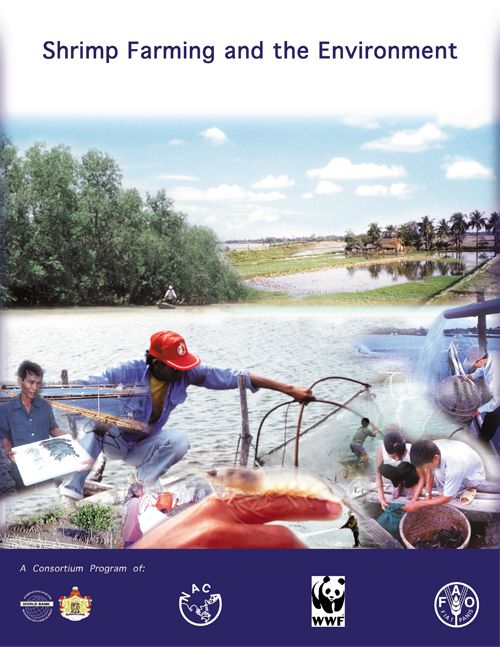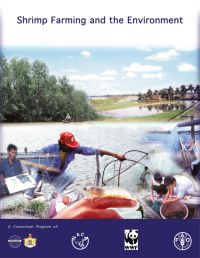Chemical and biological amendments used in shrimp farming (abstract)
4 March 2004 | Claude E. Boyd | 1429 Downloads | .pdf | 14.94 KB | Better management practices, Food Security, Safety and Certification, Health and Biosecurity, Shrimp, Environment and Sustainability, Water quality
This article compares the use of chemical and biological amendments in shrimp farming in Asia and the Americas. The information comes mainly from the author’s experience in Thailand and Ecuador, as well as from the literature. The amendments are discussed according to three major categories: (1) water and soil quality management products, (2) biocides, and (3) feed additives.
There is relatively little use of fertilisers in Asia compared to the Americas. The main chemical fertilisers used in Asia are urea and triple superphosphate; fertilisation with animal manures is not common. In the Americas, by contrast, a wide range of chemical fertilisers are promoted by vendors, and animal manures and other organic fertilisers are often applied to ponds. Agricultural limestone is used widely in both Asia and the Americas, but larger quantities of burnt and hydrated lime are applied to shrimp ponds in Asia. Overall, liming is practiced more widely and more intensively in Asia than in the Americas. Probiotics (bacteria, enzymes, and plant extracts) are used widely in both Asia and the Americas. Zeolite is commonly applied to ponds in Asia but is seldom used in the Americas. There is some use of sodium bicarbonate and carbonate, peroxides, and aluminum compounds in Asia, but once again these products are seldom used in the Americas. The most likely environmental impact from the use of these water and soil quality management products is eutrophication of coastal water from fertiliser nutrients. However, aquatic organisms can be exposed to toxicity if burnt or hydrated lime, peroxides, or aluminum compounds are accidentally spilled into natural waters. Aside from the possibility that shrimp flesh can be contaminated with antibiotic residues from animal manures, no other food safety hazards exist from applying water or soil management products. Safety issues arise when workers handle burnt and hydrated lime and peroxides, however.
Biocides are made up of a wide range of substances, including chlorine compounds, formalin, providone-iodine, quarternary ammonia compounds, furazolidone, malachite green, glutaraldehyde, potassium permanganate, peroxides, copper sulfate, various insecticides, treflan, and lime. These products have long been used in hatcheries to disinfect water and equipment and to control diseases in culture tanks. Viral diseases became a serious problem during shrimp grow-out in China in 1993/94 and in Thailand in 1995/96. At those times, farmers began to apply biocides to ponds. The potential for environmental, worker safety, and food safety problems related to biocides is much greater when biocides are put in ponds than when they are applied in hatcheries, mainly because ponds require larger amounts of biocides.
The shrimp in ponds treated with biocides might also be contaminated with residues. There was little use of biocides in the Americas until the late 1990s, when White Spot Syndrome Virus disease became a serious threat. Shrimp producers there tried all the products that had been used in Asia in attempts to control white spot virus. Because biocides are proving to be ineffective in preventing shrimp diseases in ponds, their use is declining in favor of disease prevention measures such as disease-free post-larvae, less water exchange, and better pond management to reduce stress. Nevertheless, biocides continue to be used in Asia and in the Americas, and programs to educate farmers on the safe and effective uses of chemicals are badly needed.
Feed additives—vitamins, minerals, binders, attractants, chitin, immunostimulants, and therapeutic agents—are included in shrimp feed throughout the world. Two possible hazards can result from using feed additives: phosphorus added to feed can cause eutrophication of natural waters, and antibiotic agents in medicated feed might result in antibiotic-resistant strains of micro organisms.
Certain chemical and biological agents, while necessary to successful shrimp farming, should be used only when needed and in a safe and responsible manner. Following better management practices (BMPs) for responsible use of chemical and biological amendments in shrimp farming is essential.
Copyright, all rights reserved.

